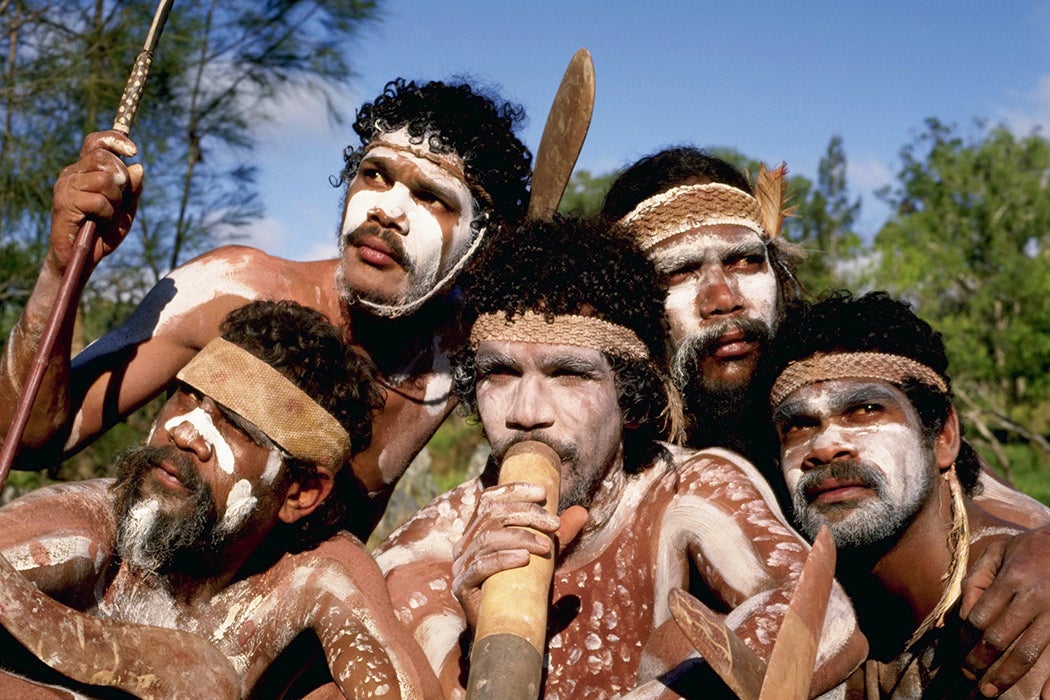Reggae is distinctively Jamaican music and also music of joy and liberation listened to around the world. And, as historian Victoria Grieves writes, it has a unique history among Aboriginal people of Australia. Grieves describes this history through the figure of musician and Buluwai traditional owner Willie Brim.
Two of Brim’s grandparents were survivors of “bushwhacking” massacres of Aboriginal people. They arrived as children at a Seventh-day Adventist mission in the Kuranda region of Queensland, where white Christians worked to convert them to Christianity and separate them from their culture. Born in 1960, Brim absorbed both Christian and Buluwai religion and philosophy. As a teenager, he lived with his grandfather, who taught him about the natural world and methods of harvesting seasonal foods from the land.
In the 1970s, hippies from Australia’s south moved to Kuranda and eagerly mingled with the Aboriginal community. Most significantly for Brim, they brought with them the reggae music of Peter Tosh and Bob Marley.
“Tosh and Marley, with their spiritually conscious lyrics, immediately spoke to Willie,” Grieves writes. The music was joyful in a way that the hymns he’d grown up with were not. And Brim recalls thinking that Marley “is singing about us and the [B]lack people of the world!” He also found uncanny cultural parallels. He notes that, while outside observers sometimes incorrectly assume his dreadlocks reflect an embrace of Rastafarianism, his Buluwai ancestors also wore dreadlocks.
Soon, Grieves writes, Brim began to play reggae music himself. In 1978, he and three other local men formed the group Mantaka, writing songs celebrating their land and traditions. The band integrated its music into the Buluwai philosophy known as “The Dreaming,” emphasizing the sharing of the emotion and experience of being “on country.”
Also in the 1970s, unbeknownst to Brim and his community, other Aboriginal people were also drawing inspiration from Black struggles around the world. This helped spark the creation of another Australian reggae group, No Fixed Address. In 1982, the two bands met, and jammed together, at Aboriginal protests during the Commonwealth Games in Brisbane.
Weekly Newsletter
Grieves writes that in the 1980s, Mantaka became nationally known, opening for groups like UB40 and playing in Sydney and at Spirit Festivals in Adelaide. In 1987, Brim helped found Tjapukai Dance Theatre (TDT), guided by Elders in the community who determined which aspects of the culture were appropriate to share with an outside audience. Brim later said that non-Aboriginal audiences were surprised at both the humor of the performances and the fact that “[w]hen we dance, we dance for three days and nights.” TDT toured the US, Canada, and parts of Europe and Asia. This allowed Brim and the other Aboriginal performers to meet Indigenous people from around the world.
Today, Brim once again lives “out in the scrub” on Buluwai land, but, unlike in his childhood, he’s now connected with Indigenous people across Australia and beyond. Among other ongoing projects, he now uses social media to share videos telling stories of Aboriginal heroes with the world.
Support JSTOR Daily! Join our new membership program on Patreon today.







